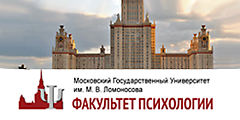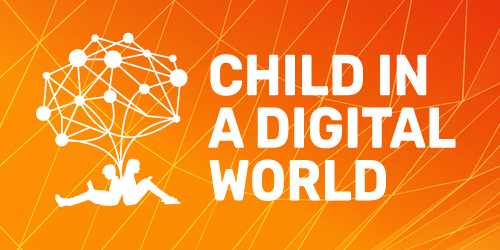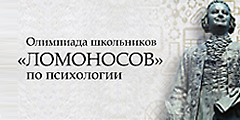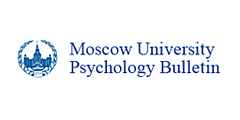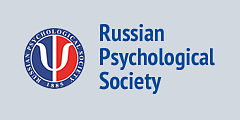2016
-
Personality attributes of children with behavior problems. An exploratory analysis with the Exner Comprehensive System of the Rorschach Inkblot Test and implications for the socio-historical clinical practice approachPDF HTML9610cite
Saraiva A. B., Ferreira J. (2016). Personality attributes of children with behavior problems. An exploratory analysis with the Exner Comprehensive System of the Rorschach Inkblot Test and implications for the socio-historical clinical practice approach. Psychology in Russia: State of the Art, 9(4), 193-204.
copied
-
Proposal for psychomotor development in newborns with low weight according to A.R. Luria’s conception
-
The zone of proximal development during assessment of intellectual development in pre-school children
-
The connection of socio-demographic factors and child-parent relationships to the psychological aspects of children’s developmentPDF HTML12788cite
Sobkin V. S., Veraksa A. N., Bukhalenkova D. A., Fedotova A. V., Khalutina U. A., Yakupova V. A. (2016). The connection of socio-demographic factors and child-parent relationships to the psychological aspects of children’s development. Psychology in Russia: State of the Art, 9(4), 106-122.
copied
-
Neurophysiological correlates of artistic image creation by representatives of artistic professions
-
Face cognition in humans: Psychophysiological, developmental, and cross-cultural aspects
-
Psychophysiological methods for the diagnostics of human functional states: New approaches and perspectivesPDF HTML18140cite
Chernorizov A. M., Isaychev S. A., Zinchenko Yu. P., Znamenskaya I. A., Zakharov P. N., Khakhalin A. V., Gradoboeva O. N., Galatenko V. V. (2016). Psychophysiological methods for the diagnostics of human functional states: New approaches and perspectives. Psychology in Russia: State of the Art, 9(4), 23-36.
copied
-
Intellectual and personality factors in the achievement of high exam effectiveness in first-year Russian university students
-
Cognitive and value parameters of students’ perceptions of the effects of psychoactive substances
-
Psychological resources of modern Russian adolescents’ resilience to violence in the educational environment
-
Gender and age aspects of child psychological defenses in child-mother relationships
-
Structural characteristics of the institutional environment for young childrenPDF HTML12328cite
Muhamedrahimov R.J., Arintcina I.A., Solodunova M. Y., Anikina V. O., Vasilyeva M. J., Chernego D. I., Tsvetkova L. A., Grigorenko E. L. (2016). Structural characteristics of the institutional environment for young children. Psychology in Russia: State of the Art, 9(3), 103-112.
copied
-
The relation between college students’ academic mindsets and their persistence during math problem solving
-
Development-focused educational texts as a basis for learners’ intellectual development in studying mathematics (DET technology)
-
Competitiveness of personality as a psychological phenomenon: The content of the construct and its typology
-
Eye movement parameters while reading show cognitive processes of structural analysis of written speech
-
Pilot study of the influence of a communicator’s speech characteristics on a recipient’s willingness to maintain interaction in cross-cultural online communication
-
Self-transcendence facilitates meaning-making and flow: Evidence from a pilot experimental study
-
Adaptation of instruments developed to study the effectiveness of psychotherapeutic processes
-
An existential criterion of normal and abnormal personality in the works of Carl Jung and Carl Rogers
-
The contamination of young people’s notions about narcotics and psychoactive substances as a threat to psychological security
-
Strategies and resources for coping with fear of disease progression in women with reproductive system cancer
-
Structural-phenomenological features of the internal picture of doctors’ illnesses
-
Warrior’s Spirit: Review of Michael Matthews’s book Head Strong: How Psychology is Revolutionizing War
-
Attitude as labor migrants’ social-psychological adaptation factor (Labor migrants from Uzbekistan taken as examples)
-
Examining the public’s exposure to reports about ethnic groups in mainstream Russian media
-
On analyzing the results of empirical research into the life-purpose orientations of adults of various ethnic identities and religious affiliati
-
Readiness for interaction with inoethnic subjects of education and ethnic worldview
-
Ethnopsychological aspects of the meaning-of-life and value orientations of Armenian and Russian students
-
Ethnoreligious attitudes of contemporary Russian students toward labor migrants as a social group
-
Assimilation or integration: Similarities and differences between acculturation attitudes of migrants from Central Asia and Russians in Central Russia
-
The representation of love among Brazilians, Russians and Central Africans: A comparative analysis
-
Intercultural relations in Kabardino-Balkaria: Does integration always lead to subjective well-being?
-
Intercultural relations in Russia and Latvia: the relationship between contact and cultural security
-
Comparative analysis of Canadian multiculturalism policy and the multiculturalism policies of other countries
- Back
- 1
- Next
- Pages



